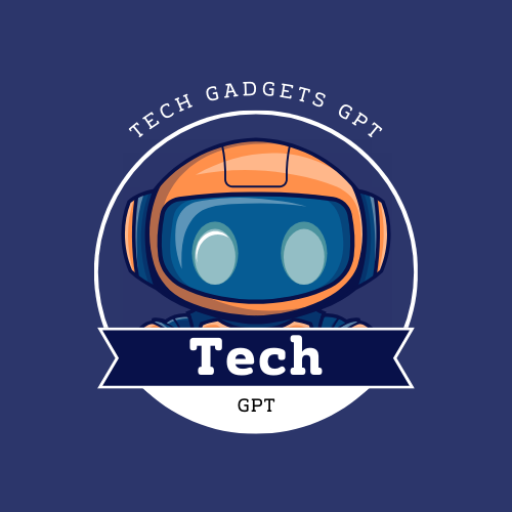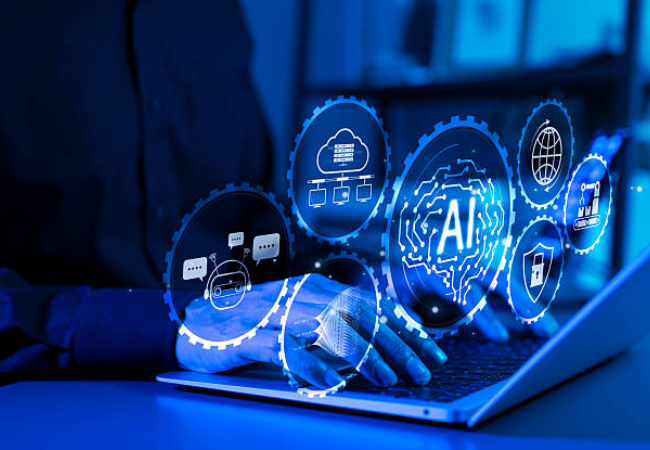Table of Contents
ChatGPT 5 is not officially released, but various AI models and tools function similarly to ChatGPT. These include alternatives like Claude, Gemini, and others, some of which offer free versions or trials. Chat GPT also provides API access for developers to integrate its capabilities into their applications, with different pricing plans based on usage. Many of us use ChatGPT as shorthand to refer to any generative AI. But many alternatives offer better outputs and more specialized experiences for different use cases. Think content creation, online research, coding, creative writing, and project management.
ChatGPT has taken the world by storm. Developed by OpenAI, ChatGPT is an advanced AI conversational agent capable of understanding and generating human-like text. With an endless range of applications, it’s not surprising that ChatGPT is already the fastest-growing web application ever. ChatGPT is the most prominent and most successful generative AI tool. However, this is only the tip of the iceberg. Many next-generation AI tools are fuelling the current AI revolution. With the launch of ChatGPT‑5, developers, businesses, and everyday users are eager to explore its capabilities, API integrations, and subscription plans. As we will demonstrate below, there are compelling reasons to consider them as an alternative to ChatGPT.
In this guide, we’ll break down ChatGPT‑5 features, the ChatGPT API, top AI alternatives, and pricing plans to help you choose the best solution for your needs.
Release of ChatGPT-5
ChatGPT-5 is OpenAI’s next-generation language model, expected to launch in early August 2025. It consolidates the strengths of their latest reasoning (o-series) and multimodal (GPT‑4o) models into one unified system, bringing together text, image, voice, and reasoning capabilities in a single assistant.
What is ChatGPT‑5?
ChatGPT-5: A Leap Toward Artificial General Intelligence
ChatGPT-5 is not just another iteration in OpenAI’s line of large language models. It’s positioned as a critical step toward the long-envisioned goal of Artificial General Intelligence (AGI). ChatGPT-5 is OpenAI’s latest large language model, designed to provide even more human-like responses, improved reasoning, and enhanced multi-model capabilities. It merges OpenAI’s advanced reasoning capabilities (from o‑series models like o3) with multimodal functionality (from GPT‑4o), eliminating the need to switch between specialized models
Often referred to as a “unified” model, GPT-5 dynamically adjusts its reasoning depth based on the complexity of the prompt, offering quicker replies for simple queries and deeper responses when needed. Early testers report improved reasoning, coding, and creative writing performance compared to Claude and Gemini alternatives
Key Features of ChatGPT‑5
Improved Context Handling:
Processes larger prompts with higher accuracy. The context handler function is used to control the conversational flow of an action. You can change the order in which the params are prompted to the users at runtime. You can also skip some params, do custom validations of the param values, and ask for a confirmation before action execution at runtime. It is essentially a name/value list, and as such, it requires a security provider to know what names to look for (that is, use of a ContextHandler requires close cooperation between the Weblogic container and a security provider). GPT‑5 offers an expanded context window exceeding 200,000 tokens (rumored up to 1 million). This enables it to analyze entire books, lengthy research papers, or massive codebases all at once. Additionally, it has enhanced long-term memory, enabling more personalized and coherent multi-session conversations..
Why it matters: Users get more accurate, consistent, and personalized responses, even during long or complex interactions
Multi-Modal Support:
Multi‑modal support means ChatGPT‑5 can understand and generate multiple types of input and output, not just text. Unlike previous models that were primarily text‑based, GPT‑5 is designed to process and combine text, images, and code simultaneously. Unlike GPT‑4, which was mainly text and image-based, GPT‑5 is expected to process and generate text, images, audio, and even video, making it a truly multimodal assistant. It is a noteworthy example of a multimodal AI system. Instead of using a single AI model designed to work with a single form of input, like a large language model (LLM) or speech-to-voice model, multiple models work together to create a more cohesive AI tool.
Why it matters: This allows users to interact with GPT‑5 in a more natural, human‑like way—uploading an image for analysis, sending voice notes for transcription, or even combining formats in a single query. It’s a big step towards true AI assistants that understand the world in multiple dimensions.
Faster Responses:
Optimized latency for real-time interaction. Faster responses mean ChatGPT‑5 delivers answers more quickly and efficiently than previous versions. Users experience smoother conversations and quicker results, even with complex tasks.GPT‑5 uses a more efficient neural network design that reduces processing time without sacrificing accuracy. It intelligently manages computation resources, handling simple queries almost instantly. Unlike older models that applied the same processing depth to every prompt, GPT‑5 adapts reasoning effort:
Simple queries → processed quickly with minimal computation.
Complex tasks → use deeper, step-by-step reasoning where needed.
Why it matters: Real-Time Use Cases: Developers can build faster chatbots, virtual assistants, and interactive tools without noticeable lag.
Better User Experience: Conversations feel more natural and engaging, as replies are delivered with almost no delay.
Scalability: Businesses handling large volumes of queries benefit from lower latency and reduced server load.
Better Safety & Accuracy:
Reduced hallucinations and misinformation.GPT-5 is expected to significantly improve in both safety and accuracy compared to its predecessors. This includes a reduction in hallucinations, improved reasoning, and enhanced ability to handle complex tasks, especially in critical fields. OpenAI is also prioritizing stronger ethical and safety measures to minimize bias, misinformation, and misuse, with user-controlled safety settings.
Reduced Hallucinations:
GPT-5 is expected to generate fewer inaccurate or fictional responses due to refined deep learning algorithms and larger, more diverse training datasets
Greater Efficiency and Scalability:
GPT-5 is expected to be more efficient, with an optimized architecture to reduce computing costs and environmental impact.
Better Memory and Contextual Understanding:
This should lead to more coherent and relevant responses, especially in long-form conversations and complex tasks.
Why it matters: Users get trustworthy, safer, and higher-quality responses, making GPT‑5 more dependable for both personal and business use
Plugin & Tool Integration:
Expanded ecosystem for productivity. AI plugins are modular software components that let an AI assistant connect to external services or applications via APIs, hiding technical details like authentication and data formatting from the core AI system. This allows the AI to perform real-world actions like booking flights, generating charts, or querying databases.
In frameworks like Microsoft’s Semantic Kernel, plugins (or “functions”) offer semantic metadata so the AI can automatically select and call appropriate actions within code, based on the user’s request
Plugin and tool integration transform an AI assistant from a passive language model into a proactive, action‑capable agent. It boosts efficiency, improves decision-making, personalizes user experiences, and makes organizational AI deployments scalable and future‑proof.
Why Tool & Plugin Integration Matters
1. Unlocks Powerful Capabilities
Without plugins, an AI assistant is isolated, limited to built-in functions. Plugins act as adapters that connect the AI with external systems like CRM, finance apps, or databases.
2. Massive Productivity Gains
- Automates routine tasks like scheduling, form-filling, or note-taking, saving time and reducing human error
- Frees up professionals to focus on high‑value activities rather than administration
3. Paving the Way for Agentic AI
With tool integration, modern assistants move beyond reacting to user prompts—they begin making decisions, anticipating needs, opening tickets, or personalizing workflows automatically
How GPT‑5 Differs from GPT‑4
| Feature | GPT‑4 (Including GPT‑4o) | GPT‑5 (Expected) |
| Context Window | 128K tokens | 200K–1M+ tokens |
| Modalities | Text & Images | Text, Images, Audio, Video |
| Reasoning Ability | High | Significantly improved |
| Memory | Limited per session | Persistent, multi-session |
| Availability | ChatGPT Plus, Enterprise | Plus, Enterprise, API |
What’s CHATGPT API?
The ChatGPT API is a tool that allows developers to integrate the powerful language model behind ChatGPT into their applications and software. It provides a way to access and utilize ChatGPT’s conversational capabilities, enabling developers to build chatbots, automate tasks, generate text, and more. Essentially, it’s a gateway for other applications to leverage the AI features of ChatGPT. The ChatGPT API is a powerful interface that allows developers to embed OpenAI’s LLMs into their own applications, websites, and digital products.
How Developers Use the API
- Customer Support Automation
Powering AI chatbots for 24/7 assistance. Customer Support Automation refers to using ChatGPT‑5 to handle customer inquiries automatically through chatbots, helpdesks, or virtual assistants.
- 24/7 Availability – Provides instant support without human intervention.
- Personalized Responses – Remembers context and tailors replies to customer needs.
- Cost Efficiency – Reduces the need for large support teams while improving response times.
🔹 Why it matters: Businesses can improve customer satisfaction, save costs, and deliver faster, consistent support at scale.
- Content Generation
Creating articles, ads, or product descriptions. Content generation involves using ChatGPT-5 to create high-quality written material automatically.
- Versatile Output – Generates blogs, articles, ads, social media posts, and more.
- Human-Like Writing – Produces natural, engaging, and contextually relevant content.
- Time-Saving – Speeds up content production for marketers, writers, and businesses.
🔹 Why it matters: It helps users produce content faster, maintain consistency, and focus on creative strategy rather than manual writing.
- Data Analysis & Summarization
Processing large datasets efficiently. Data analysis & summarization refer to GPT‑5’s ability to process large datasets or documents and deliver clear, concise insights.
- Data Interpretation – Analyzes complex information, identifies patterns, and provides meaningful conclusions.
- Automatic Summaries – Condense long reports, research papers, or articles into easy-to-understand summaries.
- Decision Support – Helps businesses and individuals make data-driven decisions quickly.
🔹 Why it matters: It saves time, reduces manual effort, and ensures quick understanding of large amounts of information.
- App Integrations
Adding AI-driven features to software tools. App integration means embedding ChatGPT‑5’s capabilities directly into software, websites, and mobile apps to enhance their functionality.
- Seamless AI Features – Adds chat, content creation, or analysis tools within existing apps.
- Customizable Solutions – Developers can tailor GPT‑5’s responses to match their brand voice and user needs.
- Enhanced User Experience – Makes applications smarter, more interactive, and efficient.
🔹 Why it matters: Businesses can upgrade their apps with AI-powered features, improving usability and customer engagement.
- Voice Assistants & Agents
Integrating GPT‑5 with voice interfaces, Voice assistants & agents use ChatGPT‑5 to interact with users through natural speech instead of just text.
- Speech Recognition & Response – Understands spoken queries and replies in real time.
- Multimodal Interaction – Combines voice with text, images, or other data for richer assistance.
- Hands-Free Convenience – Ideal for smart devices, customer service, and personal assistants.
🔹 Why it matters: It enables more natural, conversational, and accessible AI interactions across devices and platforms.
ChatGPT API Pricing & Limits
📉 Price Differences Explained
- Cache-Optimized Pricing:
Repeated or identical prompts benefit from lower cached-input pricing.
- Model Complexity:
Reasoning-optimized models like o1-pro are significantly costlier due to deep chain-of-thought processing.
- Token Costs
Output tokens generally cost 4–6× more than input tokens because they represent generated content.
⏱ Rate Limits & Usage Caps
- Message Caps for Plus, Pro, or Team users:
- ~100 messages/week using o3
- ~100/day for o4-mini-high
- ~300/day for o4-mini before hitting the cap
- Request Rate Limits:
Governed by tokens per minute (TPM) and requests per minute (RPM), managed per user or Azure subscription. e.g., gpt‑4.1 models may be limited to 5M TPM / 5k RPM per region.
📦 Developer vs Business Pricing Tiers
- Entry-Level Developers:
Models like o3-mini (~$1.10 input; $4.40 output per 1M tokens) balance cost and power well.
- Enterprise & Teams:
Larger-scale users often opt for GPT-4o, o1, or o1-pro, with higher token pricing but premium capabilities. Enterprise customers may access custom quotas and SLAs.
🧩 Cost Factors & Optimization Tips
- Token Optimization:
Trim prompts, use summaries, and only include essential context to reduce token usage.
- Prompt Caching:
Reuse identical prompts where possible—this triggers lower cached-input pricing.
- Tiktoken Usage:
OpenAI’s Tiktoken library helps estimate token usage before sending requests for better cost control.
✅ Why This Matters
- Transparent Billing:
You only pay for usage—no fixed tiers with heavy overage fees.
- Scalable for Different Needs:
Whether you’re running small integrations or powering enterprise customer-support agents, you can choose models based on accuracy, speed, and price.
- Performance vs Price Tradeoff:
High reasoning capabilities (o1‑pro) cost more, but provide superior output for critical tasks
The Best ChatGPT Alternatives
- Claude for human-like writing
- Semrush Content Toolkit for SEO-friendly content
- Copilot for Microsoft users
- Gemini for Google integrations
- Meta AI for connecting with social platforms and experimentation
- Perplexity AI for online research
- GitHub’s Copilot for coding assistance
- NotebookLM for research and learning
- Jasper AI for enterprise content creation
- Pi.ai for emotional support
- Otter for project management
Here’s the introduction to these alternatives to ChatGPT :
1. Claude – For Human‑Like Writing
Claude, developed by Anthropic, is designed to generate content that feels more human, ethical, and context-aware than many competitors. It uses Constitutional AI, which makes its outputs safe and aligned with user intent. Claude is particularly good at long-form writing (essays, articles, and reports) thanks to its extended context window.
Why it matters:
- Ensures high-quality, natural writing without sounding robotic
- Reduces the risks of biased or unsafe outputs
- Perfect for writers, educators, and businesses prioritizing ethical AI
2. Semrush Content Toolkit – For SEO-Friendly Content
The Semrush Content Toolkit is a specialized AI tool that helps content creators write with SEO optimization in mind. It integrates keyword research, topic clustering, readability checks, and competitive analysis to ensure content ranks well on search engines.
Why it matters:
- Enhances search engine visibility and organic traffic
- Saves time by combining AI writing with SEO best practices
- Essential for marketers, bloggers, and businesses wanting higher rankings
3. Copilot – For Microsoft Users
Microsoft Copilot integrates OpenAI’s models directly into Microsoft 365 (Word, Excel, Outlook, Teams). It helps users write documents, analyze data, automate emails, and create presentations with AI assistance.
Why it matters:
- Seamlessly embedded in tools businesses already use
- Increases productivity across office tasks
- Ideal for professionals looking to automate repetitive work
4. Gemini – For Google Integrations
Google Gemini (successor to Bard) leverages Google’s search capabilities and cutting-edge AI reasoning. It provides real-time information, integrates with Google Workspace, and supports text, images, and code analysis
Why it matters:
- Access to live web data for up-to-date answers
- Works smoothly with Google Docs, Gmail, and other tools
- Great for researchers and businesses needing accurate, current insights
5. Meta AI – For Social Platform Integration & Experimentation
Meta AI connects with Facebook, Instagram, and WhatsApp, enabling personalized recommendations, image generation, and interactive features. It’s also a testing ground for experimental AI in social media.
Why it matters:
- Enhances social engagement with AI-generated content
- Allows marketers to experiment with new content formats
- Offers unique creative tools for social media influencers
6. Perplexity AI – For Online Research
Perplexity AI is like an AI-powered search engine. It answers questions in real-time while citing sources, making it more trustworthy than standard chatbots. Users can deep-dive into topics with links to verified resources.
Why it matters:
- Provides fact-checked answers with references
- Speeds up research for students, journalists, and analysts
- Reduces misinformation risk with source transparency
7. GitHub Copilot – For Coding Assistance
GitHub Copilot, powered by OpenAI Codex, helps developers by suggesting code snippets, auto-completing functions, and providing debugging hints. It integrates directly with popular IDEs like VS Code.
Why it matters:
- Speeds up software development
- Reduces repetitive coding work
- Helps developers learn by showing real-time coding suggestions
8. NotebookLM – For Research & Learning
NotebookLM, created by Google, is a personal research assistant. Users can upload documents (PDFs, notes, research papers), and the AI can summarize, answer questions, and generate insights based on that content.
Why it matters:
- Makes learning and research faster and more organized
- Provides contextual answers based on user-uploaded material
- Perfect for students, researchers, and academics
9. Jasper AI – For Enterprise Content Creation
Jasper AI is a business-focused AI writing platform that helps teams create marketing copy, blogs, emails, and social media posts. It supports brand voice customization and collaboration among multiple users.
Why it matters:
- Ensures consistent brand messaging across all content
- Speeds up large-scale content creation
- Widely used by marketing agencies and enterprises
10. Pi.ai – For Emotional Support
Pi.ai (Personal Intelligence) is an AI designed to provide empathetic, conversational support. Unlike task-oriented AIs, Pi focuses on listening, offering guidance, and emotional connection.
Why it matters:
- Helps users feel heard and supported
- Offers non-judgmental conversations for mental well-being
- Ideal for people seeking companionship or stress relief
11. Otter – For Project Management
Otter.ai is an AI tool that goes beyond transcription by capturing meeting notes, summarizing discussions, and identifying action items. It integrates with Zoom, Teams, and project management tools.
Why it matters:
- Streamlines team collaboration
- Saves time with automatic meeting documentation
- Boosts productivity by keeping projects on track
Comparison: ChatGPT‑5 vs Alternative
| Model | Strengths | Weaknesses |
| ChatGPT‑5 | Best all-rounder, multimodal, superior reasoning | Higher cost |
| Gemini | Great for real-time data, Google integration | Less customizable |
| Claude 3 | Ethical AI, long context, enterprise-friendly | Limited plugin ecosystem |
| LLaMA 3 | Open-source, customizable | Requires self-hosting |
Conclusion
As we progress through 2025, ChatGPT‑5 emerges as a transformative force in the world of artificial intelligence. With its enhanced reasoning, expanded multimodal capabilities, and robust API integrations, it is shaping how individuals and organizations interact with AI. From casual users enjoying smarter conversations to developers building innovative applications and businesses leveraging AI for scalability, ChatGPT‑5 offers solutions for a wide range of needs.
Beyond ChatGPT, the AI landscape is thriving with powerful alternatives such as Claude, Gemini, Jasper AI, and others, each excelling in unique domains like content creation, research, coding, and social connectivity. This diversity ensures users can choose tools tailored to their goals.
The future of AI is about smarter, safer, and more connected experiences, and OpenAI continues to lead this evolution. For in-depth AI comparisons, insights, and practical tutorials, stay connected with TechGadgetGPT and keep yourself ahead of the curve




